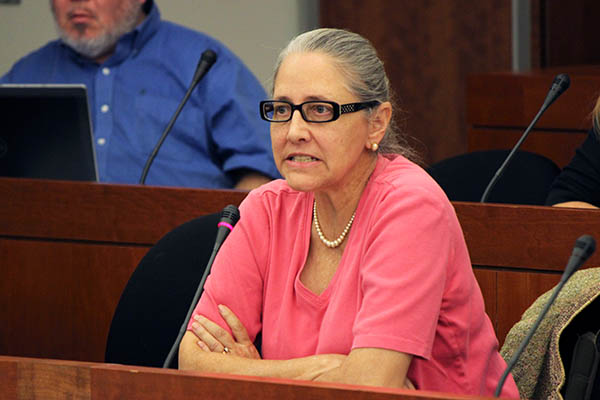Updated: March 8, 2016 at 4:28 p.m.
GW’s engineering school is slowly but surely working on closing its gender gap.
Thirty-eight percent of the undergraduate student population in the School of Engineering and Applied Sciences is female, and female enrollment is about twice as high as the national average for engineering schools, the dean of the school said last week. Faculty in the school said SEAS has taken steps toward including more women, but the fight to close the gender gap is a long one.
David Dolling, the dean of SEAS, said in an email that, along with GW’s central diversity office, the school is actively recruiting female faculty. He said the school most recently added three female faculty members, including one this year.
“SEAS has been very successful at attracting women faculty and students, although much more remains to be done,” Dolling said.
There are currently no female department chairs in the school, a drop from when three of the school’s then-five departments were chaired by women in 2012. A new biomedical engineering department opened in 2014, and is led by a new male hire.
In 2012 Terri Harris Reed, the former vice provost for diversity and inclusion who stepped down in September, headed a council to hire and retain diverse faculty. In their searches, members of the council included at least one female candidate in each position search in an effort to start balancing the number of female and male faculty members in the engineering school.
Dolling said about 22 percent of the tenured or tenure-track faculty in SEAS are women and the school hopes to grow that number dramatically over the next several years. Dolling also said the number of female tenured or tenure-track faculty is 50 percent above the national average.
More than 60 percent of the University’s new tenure-track faculty hires and about 41 percent of full-time faculty are women. The provost’s office encouraged departments to hire more female and minority faculty by covering half of their salary for three years using funds from GW’s central budget.
Kim Roddis, a professor of civil and environmental engineering and a former department chair, said it’s important that officials search broadly to find the most qualified candidate for each open faculty spot, adding that some departments created positions specifically for women in areas like mechanical and aerospace engineering.
“As a woman in a position, I would never want somebody be able to say you were only hired because you were a woman,” Roddis said. “There would have been a grain of truth to that if somebody had hired me under affirmative action when the department got an extra slot because I was a female.”
Roddis said some departments within SEAS have achieved diversity without creating designated positions, like computer science, her department, and engineering management and systems engineering. She said the computer science department made sure that nontraditional groups were included in the search process.
“A lot of times what happens is that women don’t apply because they know they aren’t going to get hired,” Roddis said. “Traditional hiring mechanisms are set up historically to favor white males.”
Roddis added that in recent years the civil and environmental engineering department has had more than one class graduate where a majority of the students were female.
“I am very proud of that and I think it is largely because of my colleagues, the faculty in my department, I think it is the way we treat people,” Roddis said. “We don’t care what package you come in, we care about what you can do.”
Julie Ryan, an associate professor of engineering management and systems engineering, said that to recruit more women in her department, officials put the word out in as many diverse publications as possible.
Ryan said research has shown more diverse project teams are more likely to come up with innovative solutions because of the mix of differing experiences, cultural assumptions and biases.
“When you get that rich mix you minimize groupthink and you really start getting more innovative outcomes,” Ryan said.
The engineering management and systems engineering department has hired about six faculty members in the past seven years, two of which were female, Ryan said.
Ryan said she has racial and gender diversity in her department. She said there is a higher percentage of women responding to their advertisements for positions, and with a more diverse applicant pool, there is a higher probability of them finding the most qualified person in that area.
“The fact that we are getting more women is a reflection of the fact that the feeding tube where the potential faculty members come from is seeing an uptick in females in the STEM environment,” Ryan said.
Poorvi Vora, a professor of computer science, said that although SEAS and the engineering field in general has made steps in the right direction, it will take a long time to change the culture in engineering and in the STEM field in general.
“It is a longer fight because there are all kinds of cultural assumptions among faculty and students,” Vora said. “We are not there yet, we should not stop because culture takes a while to change. We have to keep our eyes on that ball.”
This post was updated to reflect the following correction:
The Hatchet incorrectly reported that GW’s female engineering undergraduate student percentage is 20 percent higher than the national average. It is actually twice the national average. We regret this error.







